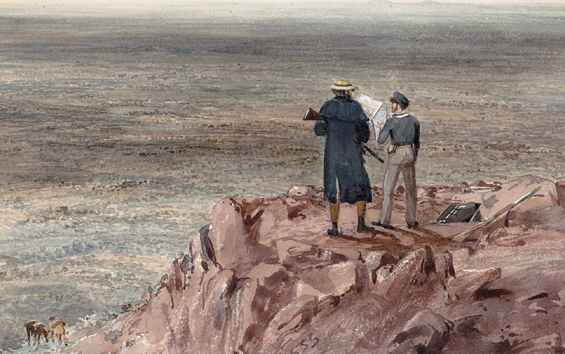1835: The founding of Melbourne and the conquest of Australia
By James Boyce
$44.95, Black Inc
1835 was the year that Tasmanian pastoralists, hungry to expand their wealth through seizure of new lands, launched their project to colonise Melbourne (then called Port Phillip). A year later the British government had endorsed their plan. Seven years later, border police, mounted police and native police were actively enforcing the brutal acquisition of Aboriginal lands.
Thirty years later and the rapid and violent destruction of the Aboriginal peoples of Victoria was almost complete.
But could Australia have been colonised less brutally? Was there a gentler, less genocidal way to dispossess Aboriginal people in 1835?
In the final chapter of 1835: The Founding of Melbourne and the Conquest of Australia, James Boyce makes his main argument; that with a little bit of state intervention, the land hungry capitalists who forced open the frontiers beyond NSW could have been restrained. Governments, says Boyce, could have slowed down the rapid seizure of land and the eviction of Aborigines, and so saved lives.
There is certainly an appeal to Boyce’s argument. He urges readers not to accept the line that politicians in NSW, Van Dieman’s Land and Britain did in 1835, that governments couldn’t possibly regulate capital. If we can imagine a history where governments reigned in resource rushes and acted for the public good, it might bring us closer to a government that regulates and restrains the coal industry in the face of climate change, says Boyce.

The trouble is, in chapters 1-17, Boyce explains all too well why governments didn’t restrain the burgeoning Australian capitalists.
Capitalists’ state
In the first place, Boyce shows that in the case of the Port Phillip Association (the key group who spearheaded the illegal expansion of white settlement to Melbourne), the capitalists were the government.
Members of the Port Phillip Association included: the Lieutenant Governor’s nephew and the Collector of Customs at Launceston, the Commissioner of the Land Board, a police magistrate, Notary Public for Launceston, a Postmaster General, the Superintendent of Convicts, the Superintendent of Roads and Bridges, and a Member of Legislative council. There is some speculation that Lieutenant Governor Arthur was a silent partner in the venture—certainly he was a significant investor after the invasion was legalised in 1838.
Boyce explores the ideological liberalism spouted by the Whigs in the British government in 1835 as a potential counterweight to colonisation via genocide. Some of these reformers were critical of the British habit of “exterminating the natives” in their colonies. But, true to their own class interests, the British ruling class ideologues blamed this genocidal outcome on the “sinfulness” of the lower classes across the British colonies, rather than seeing it as the inevitable result of British empire.
Far from offering an alternative to dispossession of Aboriginal lands, the reformers argued that enterprising, respectable colonisers were the key to protecting and civilising Aborigines. So, as Boyce points out, “evangelical influence arguably increased the possibility of new conquests receiving imperial blessing, in the name of both Christian virtue and private profit.”
If anything, Boyce demonstrates that the governments were sympathetic to and unfailingly supported these venture capitalists—simply because they were wealthy and “respectable”. The colonial Governor Bourke feared that poor whites might occupy the land first, and “upset the establishment of a social and economic order.” Bourke’s promotion of rich squatters and penalties for poor squatters demonstrated how much the Australian government was, from its inception, an instrument for the rich.
Aboriginal resistance
In any case, Boyce’s history reveals that the only genuine opposition to the wholesale conquest of Melbourne—and the continent—was that of Aboriginal people. Tragically, the Aboriginal people of the Kulin nation were unable to resist the kind of organised, military brutality of settlement. Thirty years after the founding of Melbourne at least 80 per cent of the Victorian Aboriginal population had been killed.
1835 is a convincing study of the violence and dispossession that founded the Australian state. It is a valuable lesson in the way capital marshals ideological justification, government will, legal protection, and state-organised violence to serve its own interests.
Those of us fighting against any of the vicious plans of the Australian ruling class shouldn’t underestimate what we are up against. Today, the Northern Territory Intervention and the updated Stronger Futures legislation demonstrates just how fundamentally Australian rulers are still opposed to the very existence of unassimilated Aboriginal people.
There is a continuity between the violent dispossession that took place in Melbourne nearly two centuries ago and the Aboriginal deaths in custody and the destruction of health, culture and communities that is on-going in the Northern Territory.
Lucy Honan





